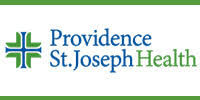- July 15,2019 | ISSN 1940-6967
- The National Association Of Medical Doctors
Featured Sponsors
Uber, Lyft See $15B Opportunity In Healthcare
By Laura Forman
Uber and Lyft have long been competing to take riders to work, to the movies or to the airport. Increasingly, they also are jockeying for the chance to give patients subsidized rides to the doctor’s office.
Both ride-share giants have been hard at work to build a footprint in an industry known as nonemergency medical transportation (NEMT), which helps mostly elderly and low-income patients lacking reliable transportation options to get to medical appointments.
Head of Uber Health Dan Trigub estimates NEMT is a $15 billion business annually. Both Uber and Lyft are investing in providing patients on-demand rides to health-care appointments, typically paid for by third-party payers like insurers or health-care providers. While this would be lucrative for ride-hailing companies, it is unclear how popular even subsidized rides will be with patients.
An estimated 3.6 million Americans a year miss medical appointments due to unreliable transportation, costing the U.S. health-care system roughly $150 billion annually, according to Uber, citing independent studies. The U.S. Government Accountability Office pegged spending on NEMT under Medicare and Medicaid at nearly $3 billion in 2013. As the start of this year, supplemental benefits to Medicare Advantage were broadened to include a range of medical transportation that supports overall wellness and health—even rides to some massage appointments.
Although neither company would quantify exactly how many subsidized rides they have offered to patients, both Uber and Lyft are now running established business units dedicated to NEMT rides. Uber said this business is experiencing rapid growth and is now working with over 1,000 health-care organizations. According to the company, prescription delivery may be on the horizon. Lyft has been in the business for three years now and last month became an enrolled Medicaid provider in Arizona, making it a covered transportation option for eligible patients going to and from medical appointments. Eligibility in more states could be coming soon.
At first blush, this seems like a clever way to acquire a steady stream of paying customers in a previously untapped rider community. According to a fall 2018 study by Pew Research, only 36% of U.S. adults say they have ever used a ride-hailing service. Most riders were younger or relatively affluent. Those aged 18 to 29 or making more than $75,000 in annual income, for example, were roughly twice as likely to have used ride-hailing as those aged 50 and older or those making under $30,000 a year. Uber’s and Lyft’s health offerings are distinct platforms from their general ride-share applications. Riders don’t need a ride-hailing app or even a smartphone; health-care providers request rides on the patients’ behalf.
Nonetheless, actual adoption may disappoint. While both companies point to studies that suggest that subsidized rides can entice more riders, that may not always be the case. A 2018 study offered free Lyft rides to 394 patients at two academic primary-care practices and found uptake of rides was low. In fact, just 20% of patients reached used the free ride, while the majority were either uninterested or didn’t respond to the offer. The rate of missed appointments was equivalent among patients offered free rides and those who weren’t.
For riders who do take up the offers, these initiatives could lower transportation costs and improve their quality of life. But the question for Uber and Lyft is whether uptake of the service will be big enough to make a difference to their mounting losses anytime soon.
Articles in this issue:
- I Got Subpoenaed As A Witness. What Do I Do?
- Our Medical Training Has Been Outsourced
- Uber, Lyft See $15B Opportunity In Healthcare
- Scope Of Practice Expansion: Patient Safety Is Sacrificed For Greater Access
- Newly Unsealed Exhibits In Opioid Case Reveal Inner Workings Of The Drug Industry
- How A Data Detective Exposed Suspicious Medical Trials
Top Physician Opportunities
Journal of Medicine Sign Up
Get the Journal of Medicine delivered to your inbox.
In This Issue
- I Got Subpoenaed As A Witness. What Do I Do?
- Our Medical Training Has Been Outsourced
- Uber, Lyft See $15B Opportunity In Healthcare
- Scope Of Practice Expansion: Patient Safety Is Sacrificed For Greater Access
- Newly Unsealed Exhibits In Opioid Case Reveal Inner Workings Of The Drug Industry
- How A Data Detective Exposed Suspicious Medical Trials
Archives
Masthead
-
- Editor-in Chief:
- Theodore Massey
- Editor:
- Robert Sokonow
- Editorial Staff:
- Musaba Dekau
Lin Takahashi
Thomas Levine
Cynthia Casteneda Avina
Ronald Harvinger
Lisa Andonis
Leave a Comment
Please keep in mind that all comments are moderated. Please do not use a spam keyword or a domain as your name, or else it will be deleted. Let's have a personal and meaningful conversation instead. Thanks for your comments!















*This site is protected by reCAPTCHA and the Google Privacy Policy and Terms of Service apply.